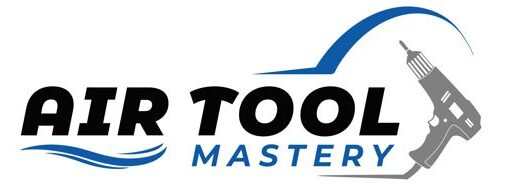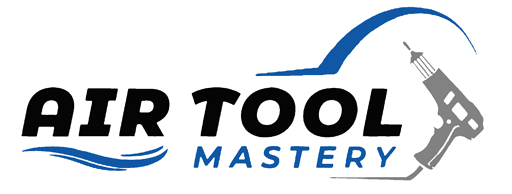Engine driven compressors are used in a wide range of industrial, commercial, and home applications. The key feature that sets them apart from the other types of air compressors is that they operate using a gasoline or diesel engine instead of relying on electricity. This makes them highly portable and suitable for use in remote locations where access to power may be limited.
So, unlike their electric counterparts, engine-driven air compressors harness the raw power of gasoline or diesel engines, delivering higher output and mobility. From construction sites to oil rigs, these powerful machines are ubiquitous, providing the necessary muscle to drive heavy-duty machinery.
And, without any dependency on electricity, they ensure uninterrupted operations, making them reliable workhorses in remote locations and demanding working conditions. In this post, we plunge into the fascinating world of engine-driven air compressors. Let’s dive right into it.
How Engine-Driven Air Compressors Work
Engine driven compressors are powered by internal combustion engines, which can run on gasoline or diesel. Talking of internal combustion, the engine’s operation is divided into four stages, or strokes: the intake, the compression, the power, and the exhaust.
Let’s take a closer look at how those stages result in the product of power for engine-driven compressors.
Intake Stroke
In this phase, the engine’s piston moves downward in the cylinder, creating a vacuum. This vacuum draws in a mixture of fuel and air into the cylinder, flowing in from an opened intake valve.
Compression
Once air is drawn into the cylinder, it’s now time for the piston to do an upward stroke. As the piston moves upward, the intake valve closes, and the fuel-air mixture gets compressed.
The Power Stroke
On reaching its peak, a spark plug ignites the compressed fuel-air mixture, causing an explosion. This explosion forces the piston downward, generating power. The consistent movement of the piston ensures a consistent supply of power.
Exhaust Stroke
The exhaust valve opens to let out the combustion gases, and the piston moves upward to expel them.

Powering the Air Compressor
At this point, we now have a rough idea of how the gas/diesel engine generates power. Next, let’s now see how the compressor makes use of that power.
In a gas/diesel engine, the fuel-air mixture is combusted in an enclosed cylinder. In an air compressor, there are two cylinders; one for air intake and another to compress that air. It’s the power generated by the engine that drives these pistons.
As the piston moves upward, it draws in air through the intake valve into the first cylinder. On reaching its peak, a connection between the two cylinders opens, allowing the compressed air to flow into the second cylinder.
The piston in the second cylinder then compresses the air further before sending it out through a discharge valve.
From the exit valve, the compressed air then moves to the storage tank, ready for use.
This process continues as long as the engine is running, providing a continuous supply of compressed air for various applications.

Advantages and Disadvantages of An Engine Driven Compressor
Engine-driven air compressors come with several advantages that make them an attractive choice for many users as well as disadvantages that make them not so appealing. Below are the most common advantages and disadvantages.
Advantages of Engine Driven Air Compressors
1. Mobility
Most of the other types of air compressors are relatively immobile. Unlike stationary electric air compressors, engine-driven models are not tied to a fixed location and do not require a constant power supply to operate. This makes them ideal for use in areas without electricity or for outdoor applications. Their portability also makes them great for on-the-go projects, such as construction sites and road repairs.
2. Versatility
Engine-driven air compressors can be used for a wide range of tasks due to their high power output. They are suitable for heavy-duty applications such as sandblasting, powering pneumatic tools, and inflating tires. No wonder they are also commonly used in industries such as agriculture, mining, and oil and gas.
3. Cost-Effective
Compared to their electric counterparts, engine-driven models are generally more affordable. But they are, honestly, not easier to maintain.
4. Durability
Engine-driven air compressors are built with tough materials that can withstand harsh environments and rough handling, making them ideal for heavy-duty jobs. They are also designed to run for long hours without overheating, which increases their lifespan.
5. No Power Surge Issues
Unlike electric air compressors, engine-driven models do not experience power surge issues as they do not rely on electricity to operate. This eliminates the need for additional surge protection devices, which can be costly.
6. Emergency Backup
In case of power outages or when working in remote locations, having an engine-driven air compressor as a backup can come in handy. It ensures that work can continue uninterrupted, preventing any delays or loss of productivity.
Disadvantages of Engine-Driven Air Compressors
While engine-driven air compressors offer numerous advantages, they also have some limitations that users should consider.
1. Noise and Emissions
One of the major drawbacks of engine-driven air compressors is their noise levels and emissions. These machines can be quite loud and produce exhaust fumes, which can be a nuisance to both the operator and those around them. Care should be taken to ensure proper ventilation when using these compressors.
2. Maintenance
As I mentioned earlier, engine-driven air compressors may be more affordable upfront, but their maintenance costs can add up over time. These models require regular oil changes and filter replacements, which can be time-consuming and costly.
3. Fuel Consumption
Engine-driven air compressors require fuel to run, which can add to the overall operating costs. The amount of fuel consumption will depend on the size and power of the compressor, as well as the workload it is subjected to. This may be a concern for users who are looking for a more cost-effective option.
4. Portability
While engine driven compressors are designed to be portable, they may still be bulky and heavy compared to electric models. This can make them challenging to transport, especially if you need to move the compressor frequently.
5. Limited Power Options
Unlike electric air compressors, engine-driven models have limited power options. They are typically available in gasoline or diesel-powered engines, which may not be suitable for all users. This could be a limiting factor for those who require a specific fuel type.
Applications of Engine Driven Compressors
Construction and Industrial Sites
One of the most common applications for engine-driven air compressors is on construction and industrial sites. These compressors are used to power various tools, such as jackhammers, nail guns, and paint sprayers.
They can also be used for sandblasting, powering pneumatic machinery, and providing ventilation.
Agriculture
In the agriculture industry, engine-driven air compressors are used for a variety of tasks, such as inflating tractor tires, powering irrigation systems, and operating pneumatic equipment. They can also be used for cleaning farm equipment and providing compressed air for livestock barns.
Automotive Repair
Engine-driven air compressors are essential in automotive repair shops, where they power various tools such as impact wrenches and air ratchets. They are also used for tire inflation and providing compressed air for painting vehicles.
Emergency Services
Engine driven compressors are often used by emergency services, such as fire departments, to power rescue tools like the Jaws of Life. These compressors are designed to be portable and can be quickly moved to different locations in case of emergencies.
Remote Locations
Due to their portable nature, engine-driven air compressors are commonly used in remote locations where there may not be access to electricity. They can be used for tasks such as drilling, construction, and providing compressed air for small-scale operations.
Recreational Activities
Bouncing castles, water slides, and other inflatable attractions are a popular form of entertainment at fairs, carnivals, and outdoor events. These attractions require a constant supply of air to stay inflated, which is where engine driven compressors come in. They can also be used for inflating tires on off-road vehicles and powering pneumatic tools during camping trips.
Conclusion On the Engine Driven Compressor
As you can see, engine-driven air compressors have a wide range of uses in various industries and activities. From agricultural to automotive, emergency services to recreation, these versatile machines play an important role in making tasks easier and more efficient.
Whether you’re on a remote job site or enjoying a day out with your family, engine-driven air compressors are there to provide the necessary power and compressed air.
So next time you see an engine driven compressor in action, remember the important role it plays in keeping our world running smoothly. With their reliability and portability, they are sure to be a valuable addition to your equipment arsenal.
We welcome questions on an engine driven compressor.

